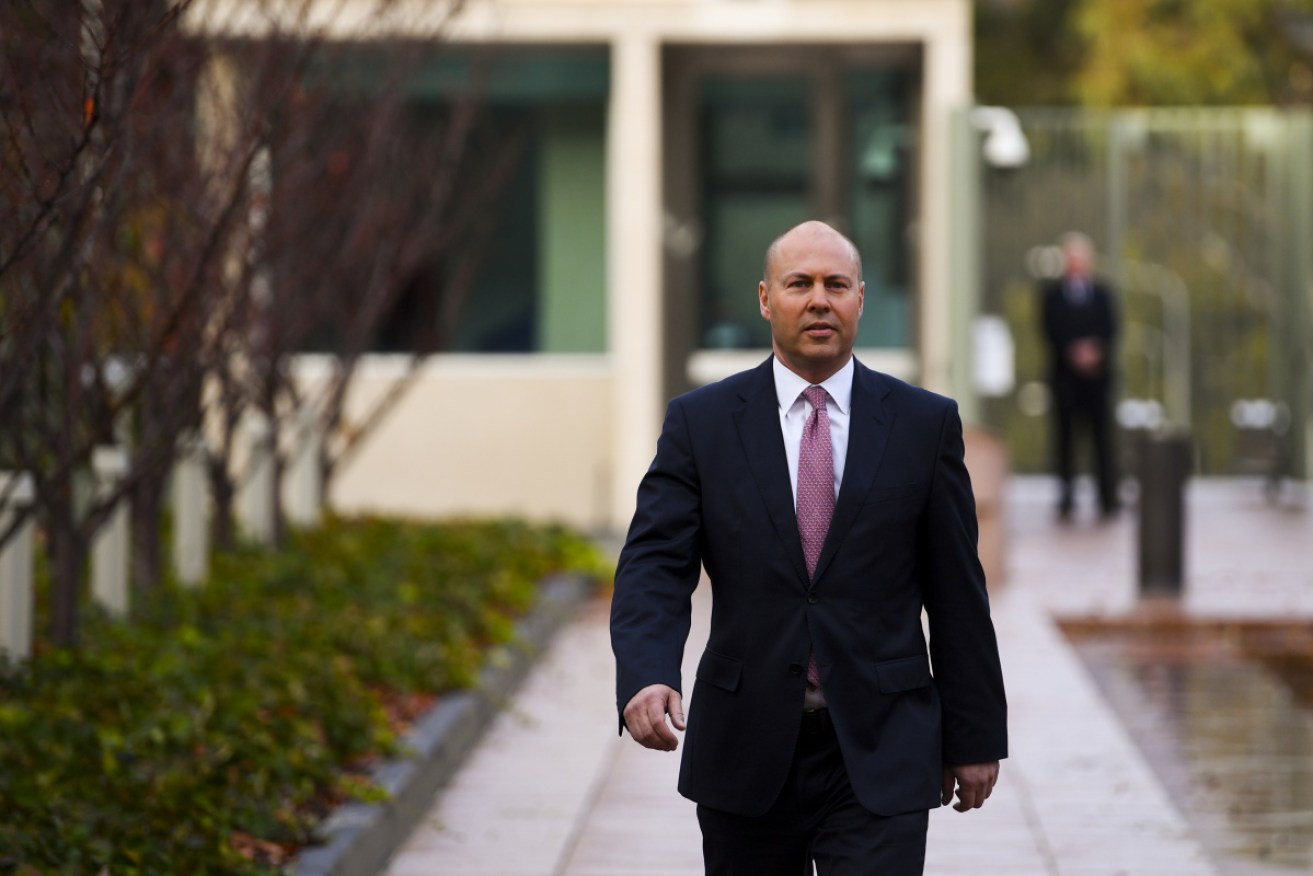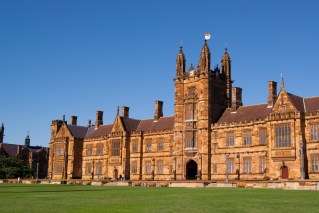Josh Frydenberg struggles to explain economic benefit of stage three tax cuts


Josh Frydenberg was on ABC's Insiders where he faced a grilling over the government’s tax cuts. Photo: AAP
Treasurer Josh Frydenberg has failed to explain how legislated tax cuts for high-income earners will lead to stronger economic growth, instead saying they will ‘‘reward effort’’ and ‘‘encourage aspiration’’.
After a budget clearly delivered with one eye on the next federal election, it was no surprise Prime Minister Scott Morrison and Opposition Leader Anthony Albanese headed straight to Queensland to campaign in marginal seats this weekend.
But it was back in Melbourne on the ABC’s Insiders where Mr Frydenberg faced a grilling over the tax cuts.
The Treasurer was pressed on whether the stage three cuts – which will cost the government $17 billion a year when they come into force in 2024-25 – were still affordable.
The budget projects nearly $1 trillion in debt and a budget deficit of $57 billion the year the cuts are due to come in.
“They create a stronger and fairer system,” Mr Frydenberg said.
“They are rewarding Australians in work and it is returning more of their money.”
Tweet from @InsidersABC
The stage three changes eliminate several tax brackets and put everyone on incomes between $45,000 and $200,000 on the same rate of 30 per cent.
The government says it is an important reform, but the changes have been criticised by Labor and the Greens as they benefit high-income earners far more than low-income earners.
Analysis by progressive think tank The Australia Institute found the stage three cuts would deliver a $7-a-week benefit for someone earning $60,000, but $174 a week for someone earning $200,000.
Stages one and two of the tax cut plan already lowered taxes slightly for those on lower incomes, while the temporary Low and Middle Income Tax Offset (LMITO) introduced in 2018 was also extended in this year’s budget, deferring an effective rise in taxes.
Mr Frydenberg was asked about the LMITO ending at the end of the year when richer Australians were to receive big cuts in 2024.
The Treasurer said the offset is “not a permanent feature of the tax system”, adding those on lower incomes had already benefited from earlier stages of the tax plan.
“The Low and Middle Income Tax Offset has been extended for a year,” Mr Frydenberg said.
“We’ve used it as a stimulus measure, not a permanent feature.”
When pressed on whether Australians on low and middle incomes would pay more or less tax next year compared to this year, Mr Frydenberg responded by saying “you are better off on stage three, stage two, stage one, compared to 2017-18.”
This comparison to the 2017-18 financial year was also used in last year’s budget, when the government spruiked tax cuts of $2160 when they were worth only half that amount.
The government has preferred to talk about the combined benefit of the total three stages of the tax measures compared to the situation before stage one, rather than compared to last year, to make the benefit sound larger.
Mr Frydenberg also refused to concede people on low or middle incomes would pay more tax when LMITO ends.
But Richard Denniss, chief economist at The Australia Institute, tweeted that “removing LMITO and introducing stage 3 tax cuts will cost people earning below $80,000 money”.
Tweet from @RDNS_TAI
Some economists and politicians, at the time of the 2018 introduction, had called for stage one and two to be passed, but stage three to be scrapped.
Also during Insiders, Mr Frydenberg couldn’t say exactly what economic benefit would come from the stage three cuts.
When asked what “growth dividend” the tax cuts would deliver, the Treasurer said they would “deliver a stronger economy over time”.
“What you’re doing is you’re rewarding effort, you’re encouraging aspiration, you’re returning more people’s hard-earned money back to them,” he said.
“You see economic growth through the years in our budget, including this year.”
The $17 billion-a-year price tag for the tax cuts may seem eye-watering – especially given it’s roughly equal to the extra funding given to aged care over five years – but recent projections found they could actually cost less, due to slowing wages.
“The cost of the tax cuts is getting smaller and that’s partly because the economy is weaker,” Deloitte Access Economics partner Chris Richardson said last week.
But the issue of the stage three cuts, which are already legislated, is being sharpened into a political spear for the government.
Labor backed the first two parts of the plan in 2018, even calling for stage two to be brought forward to give immediate benefit for lower-income earners, but was opposed to stage three.
Mr Albanese, who became Opposition Leader in 2019, has said he would come to a final position on whether a Labor government would keep or scrap stage three.
Finance Minister Simon Birmingham pressured Labor to “come clean”, while Mr Frydenberg on Sunday again accused the opposition of wanting “higher taxes”.
Labor sources say Mr Albanese will reveal his decision closer to the election.








